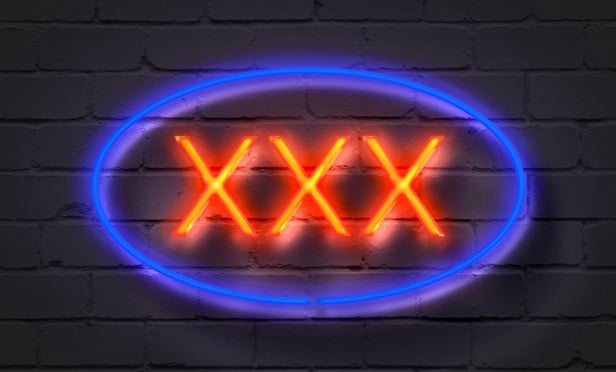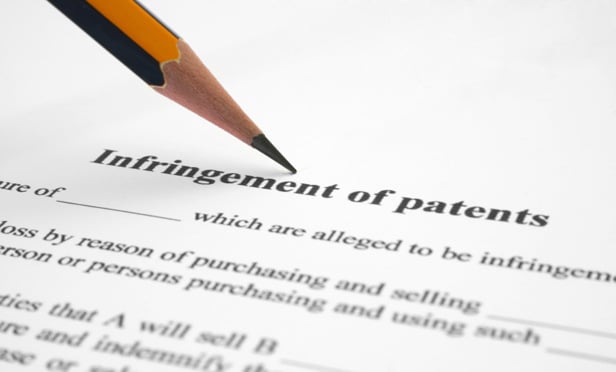Features

Increased Scrutiny for <i>Cy Pres</i> Provisions in Class Action Settlements
Lawsuits against pharmaceutical and medical device manufacturers often come in the form of class actions, and sometimes the settlement or award amount exceeds the identified class members' claim amounts. In such cases, the excess funds may be distributed to a <i>cy pres</i> recipient, but courts are starting to question such moves more thoroughly.
Features

Negotiating Key Points in Literary Agent-Author Relationships
Several of the same concepts that are in agreements between performing artists and managers also apply to agreements between authors and literary representatives.
Features

How Defendant's Prior Conduct Can Impact Copyright Cases
In the context of a copyright case, a defendant's prior bad acts and prior conduct are more useful to a plaintiff than is typical in civil litigation. In many instances, copyright infringement lawsuits are brought against defendants who have been sued before for infringement, or related misconduct, or who have been the subject of allegations or informal complaints, or who simply have experience in copyright matters.
Features

Adult Use Zoning in New York
New York City's 2001 ordinance regulating adult uses has been the subject of litigation for more than 15 years. In September, the Court of Appeals put an apparent end to the litigation by denying reargument of its June decision upholding the ordinance.
Features

Defamation and the Disgruntled Defendant
<b><i>Anti-SLAPP Legislation and Defamation Claims</i></b><p><b><i>Part Two of a Two-Part Article</i></b><p>After defendants have established that their allegedly defamatory statements were made in furtherance of their right of free speech or petition under the United States Constitution or the California Constitution in connection with a public issue, the second thing that courts must question when a defendant seeks dismissal through an anti-SLAPP motion is whether the claimant has carried his burden of establishing a probability of success on the merits of his claim.
Features

Oral Appellate Arguments in 'Blurred Lines' Copyright Case
Lawyers for Marvin Gaye's heirs and recording artists Pharrell Williams and Robin Thicke were singing past each other in court in October. But it wasn't clear which side was making the most headway with the appellate court.
Columns & Departments

Case Notes
The U.S. Supreme Court is deciding whether to consider the case of Southern Baptist Hospital of Florida v. Charles, which pits a plaintiff against a hospital in the ongoing battle over which documents are privileged as adverse event records for the improvement of quality of care, and which must be turned over to aggrieved patients and their families.
Features

New-Wave Legal Challenges for Bitcoin and Other Cryptocurrencies
As the adoption of cryptocurrencies spreads throughout the business and financial sectors, so too do the concerns that lack of regulation render the new-age currency susceptible to fraud, manipulation, and to being used as a vehicle for money laundering. Nevertheless, recent efforts by U.S. enforcement agencies to apply and enforce financial regulations mean greater scrutiny than ever before.
Features

The New Patent Venue Regime
Venue in patent cases lies "in the judicial district where the defendant resides, or where the defendant has committed acts of infringement and has a regular and established place of business." Since 1990, the Federal Circuit interpreted the term "resides" coextensively with the general venue statute such that patent venue lay where the defendant was subject to personal jurisdiction. But this year, the Supreme Court greatly narrowed that definition in <i>TC Heartland v. Kraft Foods</i>. The Federal Circuit, in turn, interpreted the newly-relevant alternative phrase. After two decades of relaxed patent venue rules, these decisions work a seismic shift in patent litigation.
Need Help?
- Prefer an IP authenticated environment? Request a transition or call 800-756-8993.
- Need other assistance? email Customer Service or call 1-877-256-2472.
MOST POPULAR STORIES
- The 'Sophisticated Insured' DefenseA majority of courts consider the <i>contra proferentem</i> doctrine to be a pillar of insurance law. The doctrine requires ambiguous terms in an insurance policy to be construed against the insurer and in favor of coverage for the insured. A prominent rationale behind the doctrine is that insurance policies are usually standard-form contracts drafted entirely by insurers.Read More ›
- The Brave New World of Cybersecurity Due Diligence in Mergers and Acquisitions: Pitfalls and OpportunitiesLike poorly-behaved school children, new technologies and intellectual property (IP) are increasingly disrupting the M&A establishment. Cybersecurity has become the latest disruptive newcomer to the M&A party.Read More ›
- A Lawyer's System for Active ReadingActive reading comprises many daily tasks lawyers engage in, including highlighting, annotating, note taking, comparing and searching texts. It demands more than flipping or turning pages.Read More ›
- Abandoned and Unused Cables: A Hidden Liability Under the 2002 National Electric CodeIn an effort to minimize the release of toxic gasses from cables in the event of fire, the 2002 version of the National Electric Code ("NEC"), promulgated by the National Fire Protection Association, sets forth new guidelines requiring that abandoned cables must be removed from buildings unless they are located in metal raceways or tagged "For Future Use." While the NEC is not, in itself, binding law, most jurisdictions in the United States adopt the NEC by reference in their state or local building and fire codes. Thus, noncompliance with the recent NEC guidelines will likely mean that a building is in violation of a building or fire code. If so, the building owner may also be in breach of agreements with tenants and lenders and may be jeopardizing its fire insurance coverage. Even in jurisdictions where the 2002 NEC has not been adopted, it may be argued that the guidelines represent the standard of reasonable care and could result in tort liability for the landlord if toxic gasses from abandoned cables are emitted in a fire. With these potential liabilities in mind, this article discusses: 1) how to address the abandoned wires and cables currently located within the risers, ceilings and other areas of properties, and 2) additional considerations in the placement and removal of telecommunications cables going forward.Read More ›
- The New York Uniform Commercial Code Comes of AgeParties in large non-consumer transactions with no connection whatsoever to New York often choose its law to govern their transactions, and New York statutes permit them to do so. What most people do not know is that the New York Uniform Commercial Code is outdated.Read More ›
